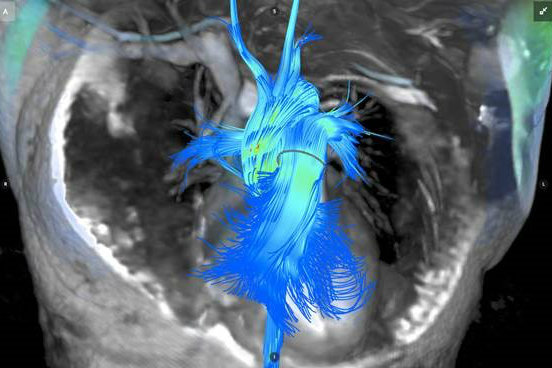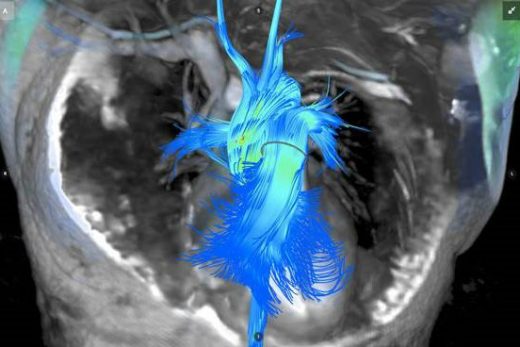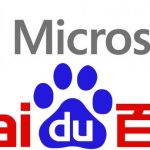Arterys, GE Healthcare to Roll Out Next-Gen MRI Scans of Heart

The healthcare tools of the future often start as research projects in academic medical centers, but they may not break out into widespread clinical practice until some sort of logjam gives way to make them workable and affordable.
GE Healthcare, a unit of Boston-based industrial giant General Electric, recognized some limits on MRI scanners like its own, and started collaborating with Stanford University physicians more than five years ago on next-generation MRI technology to better diagnose people with heart disease. The new scans resulting from this work show a patient’s beating heart like a 3D animated movie—and the image can be rotated and viewed from any angle. Up until now, these scans have been used only at Stanford and nine other medical research centers.
Chicago-based GE Healthcare is now about to go to market with the new magnetic resonance imaging technique. But it took several extra layers of technology, and a collaboration with San Francisco startup Arterys, to make that possible. That’s because GE Healthcare, by tweaking its traditional MRI scanners, was capturing so much raw data on the heart that on-site hospital scanners and computers couldn’t assemble it into images that doctors could intuitively interpret.
To solve that problem, Arterys tapped into technologies used to develop three-dimensional video games like “Super Mario 3D World.” Arterys feeds the gigabytes of MRI information into its Web-based software application, which takes advantage of the outside computing power now broadly available from the network of servers-for-hire we call “the cloud.” Those servers rely on specialized logic chips called graphic processing units or GPUs, which are commonly used to produce 3D animations.
Less than five years ago, those GPUs weren’t available from commercial cloud services, says Arterys co-founder and chief technology officer John Axerio-Cilies.
“In 2012, when we started, Amazon had just released the GPUs into the public cloud,” Axerio-Cilies says. That opened a door for GE Healthcare’s next-gen cardiac MRI. Arterys uses Amazon’s Web servers to analyze data from the scans. “A nexus of events in just a couple of years allowed this to happen,” he says.
The commercial debut of the new GE Healthcare system will mark an industry milestone, partners in the collaboration say.
“This is one of the first applications of cloud computing in a clinical application,” says Arterys CEO and co-founder Fabien Beckers.
A product version of the new MRI system, dubbed ViosWorks, will be placed in ten pilot sites before the end of the year. Plans are to make it commercially available in 2017.
GE Healthcare will be the first MRI vendor to shift its data processing to the cloud, says Eric Stahre, CEO of GE Healthcare’s MR unit.
“It’s the first example of where we’re going as a company,” Stahre says. “We see this as the first of many.”
In addition to its work on MRI, GE Healthcare has looked to enhance other medical imaging technologies through computing power. In one project, the GE division’s IT team has written software to speed up the processing of data from CT scans of the brain so that doctors can make quicker treatment decisions for suspected stroke victims.
GE Healthcare’s CEO John Flannery has predicted a 50-fold increase in the flow of data from healthcare devices by 2020. To handle that flow, the company late last year announced the creation of GE Health Cloud, a Web-based data processing and treatment collaboration platform that it says can connect to more than half a million of its imaging devices. The company is inviting 3D medical imaging developers to work within the platform.
The data processing for ViosWorks scans will eventually be shifted from Amazon’s servers to GE Health Cloud. The “4D Flow” system captures as much as five gigabytes of data, compared to about 100 megabytes in a conventional MRI scan, Beckers says.
The U.S. Food and Drug Administration has cleared both the Arterys and GE Healthcare elements of the system for the U.S. market, the companies say. Stahre says GE Healthcare is to begin its marketing rollout of ViosWorks next month.
The next hurdle will be to persuade doctors and medical insurance companies that the more elaborate scans will improve diagnosis enough to lead to better patient outcomes.
“You still have to prove your worth,” Stahre says.
Here’s the problem GE Healthcare and its research partners were trying to solve when they turned the company’s conventional MRI scans into multi-dimensional displays:
(128)












